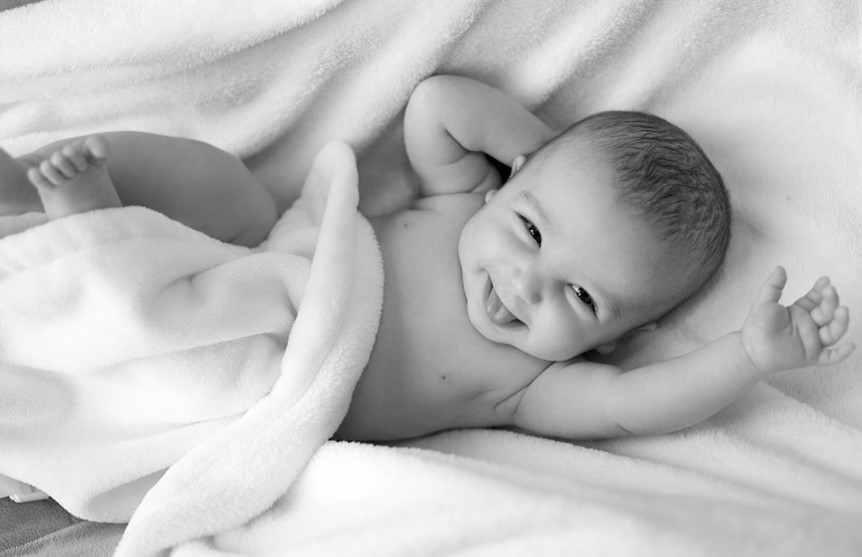Have you ever seen a newborn baby seemingly aimlessly move their arms and legs? Even though babies at this stage have little understanding of the world or how to control their own bodies, babies wander and pursue various sensorimotor experiences by moving their limbs. This “sensorimotor wandering” contributes to early development in terms of learning the basis of how to control one’s own body.
The human body consists of numerous bones, joints, and muscles, making it difficult to control their movements in a coordinated manner. Nevertheless, we can effortlessly perform various actions and behaviors. Accumulated evidence from both human and animal studies suggests that these complex and coordinated motor behaviors are achieved through a small set of spatiotemporal patterns in the sensorimotor systems. Adults or young children can learn and refine these patterns through practice and reinforcement. It is believed that some of these patterns are acquired and augmented through sensorimotor experiences in the very early stages of development.
The earliest sensorimotor experience in humans occurs through spontaneous whole-body movements, exhibited in fetuses, neonates, and infants prior to the development of intentional motor control. Such early sensorimotor experiences, despite being task-free, presumably contribute to the maturation of the sensorimotor systems. However, the concrete impact of these movements on the overall organization of sensorimotor experience throughout the body remains unknown. Our research focuses on sensorimotor experience under spontaneous movements and the developmental changes between neonates and infants, investigating i) the whole-body sensorimotor interactions among muscle activities and proprioceptive inputs, ii) body-dependent sensorimotor modules, and iii) dynamic sensorimotor state transitions. Quite simply, we challenge to capture how the baby feels and tries to behave.
First, to quantify the infant's motor output and sensory input throughout the body, we developed a detailed motion capture system and an infantile musculoskeletal model. While adult joint movements can be captured using existing protocols, these methods are not feasible for babies due to their soft skin and size differences. Hence, we estimated joint positions and these movements from the limb part motion trajectories. In addition, no infant-specific body models existed, so we constructed an infantile musculoskeletal model based on muscle placement and alignment in skeletal specimens. By combining the detailed motion capture and musculoskeletal simulation, we estimated the sensorimotor interactions in terms of muscle activity and sensation.
Next, we analyzed the sensorimotor interactions involving the whole-body muscles as information processing. We calculated the presence of bi-directional information flow within each sensorimotor pair, consisting of whole-body muscle activities and proprioception, at individual time points (i), and based on these densities, we extracted functional sensorimotor modules that interacted cohesively with other modules (ii). Finally, to examine the dynamic interaction among the sensorimotor modules, we applied a temporal analysis that identifies recurring sensorimotor patterns across participants in the time domain (iii).
Our measurements, modeling, and analysis provide a novel quantification of sensorimotor experiences in neonates and infants during spontaneous movements. These approaches provide greater insight into the dynamic and multiple sensorimotor interactions, which presumably form the basis of later motor behaviors.
On a macroscopic level, the sensorimotor information flow among muscle activities and proprioceptive inputs was similar between the neonate and infant groups (i). However, our infant musculoskeletal model consists of 144 muscles with both activations and sensations, resulting in more than 80’000 pairs, which are particularly difficult to interpret in terms of developmental changes.
On the other hand, the interpretability of these changes was improved by extracting 22 sensorimotor modules (ii), consisting of body-dependent muscular components around the shoulder, elbow, wrist, hip, knee and ankle joints. The comparison of sensorimotor information densities based on these modules revealed an increase in whole-body coordinated and anticipatory movement in the infant group rather than reflexive. The results also indicated that such developmental changes may be based on exploration and curiosity, as well as experience frequency.
The temporal analysis identified 12 sensorimotor states and dynamic transitions among them (iii), demonstrating the spontaneous emergence of state fluctuation, such as "sensorimotor wandering." In this analysis, the neonate group wandered randomly, while the infant group exhibited a particular sequential pattern.
The sensorimotor experiences in the early developmental stage presumably play a crucial role in acquiring coordinated behavior, involving large-scale sensorimotor interactions. Also, it has been believed that functional modules related to sensorimotor information are necessary behind humans' free and complex movements. Our results suggest that spontaneous movements in babies, although being free-form, self-organize these sensorimotor interactions. Even if “sensorimotor wandering” involves an enormous number of muscular activities and sensations, babies would start to learn how to move their bodies earlier and in a smarter way than we think.
Our research indicated that "sensorimotor wandering" in early developmental stage would structure sensorimotor information in both spatial and temporal domains. Such phenomenon can be also observed in brain spontaneous activities, which is known to be an essential component of neuronal maturation. Therefore, our research could potentially shed light on the association between the origin of human behavior and the neuroscientific perspective.
Original Article:
Kanazawa, H., Yamada, Y., Tanaka, K., Kawai, M., Niwa, F., Iwanaga, K., & Kuniyoshi, Y. (2023). Open-ended movements structure sensorimotor information in early human development. Proceedings of the National Academy of Sciences, 120(1). https://doi.org/10.1073/pnas.2209953120
 Evolution & Behaviour
Evolution & Behaviour



